Highlights and access methods of Nikko Toshogu Shrine (Tochigi Prefecture)
English | Japanese
Nikko Toshogu Shrine, located in Nikko City, Tochigi Prefecture, is a shrine that enshrines the spirit of the first Shogun of the Tokugawa Shogunate, Tokugawa Ieyasu. The brightly colored decorations, which embody the architectural beauty and carving techniques of the early Edo period, are stunning, with sculptures such as the "Three Wise Monkeys" and the "Sleeping Cat" being particularly famous. This shrine was registered as a UNESCO World Heritage Site as part of the "Shrines and Temples of Nikko" in 1999.
In this article, we will explain the attractions of Nikko Toshogu Shrine in Tochigi Prefecture and how to access it for those who are traveling to Japan from overseas.
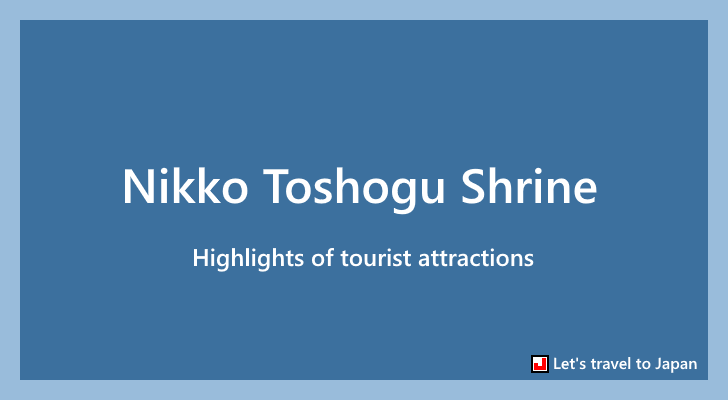
(Last modified: )
(Prefecture : Tochigi , Category : Shrines)
Table of contents
Highlights of Nikko Toshogu Shrine
Nikko Toshogu, located in Tochigi Prefecture, is a renowned tourist destination known for its rich historical significance and architectural grandeur. A UNESCO World Heritage Site, Nikko Toshogu is a Shinto shrine dedicated to Tokugawa Ieyasu, the founder of the Tokugawa Shogunate that ruled Japan for over 250 years during the Edo Period. The shrine is a symbol of Japanese art and craftsmanship and is admired for its intricate carvings and flamboyant colors.
The Yomeimon Gate, often considered as the main highlight of the shrine, is an architectural masterpiece with over 500 carvings depicting traditional Japanese life and folklore. The Five-story Pagoda, another significant structure within the shrine premises, showcases stunning Japanese architecture and is surrounded by beautiful trees that provide a picturesque backdrop. The Sleeping Cat and Three Wise Monkeys, known for their symbolic meanings, are other must-see carvings at the shrine.
A visit to the Toshogu Museum of Art, located within the shrine complex, allows visitors to appreciate valuable historical artifacts, including swords, armor, and decorative items belonging to the Tokugawa family. The museum provides a deep insight into the culture and life during the Edo period.
Nikko Toshogu can be appreciated year-round, but it's particularly enchanting during autumn (October to November) when the surrounding trees turn into brilliant hues of red and gold, adding an extra layer of charm to the historical site. Spring, when cherry blossoms bloom, is also a wonderful time to visit and enjoy the gorgeous setting.
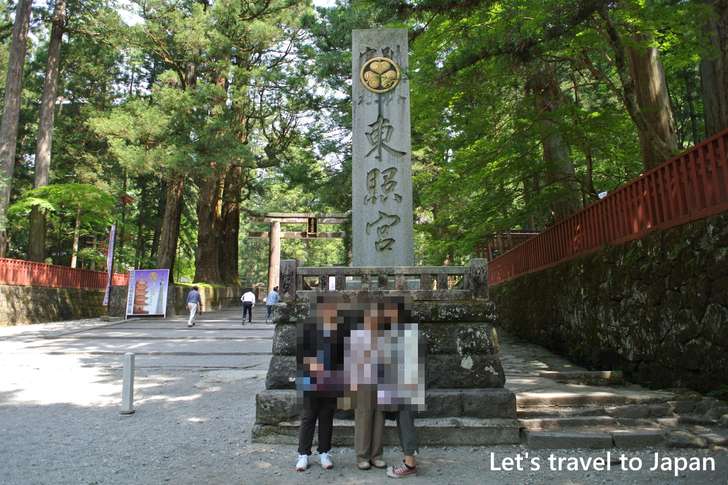
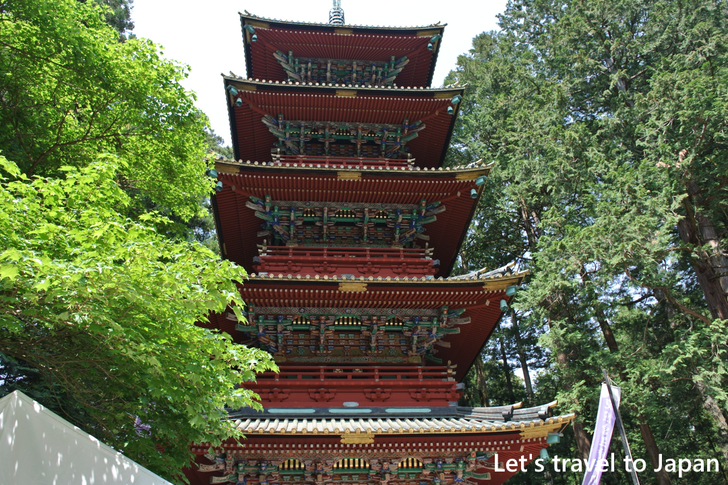
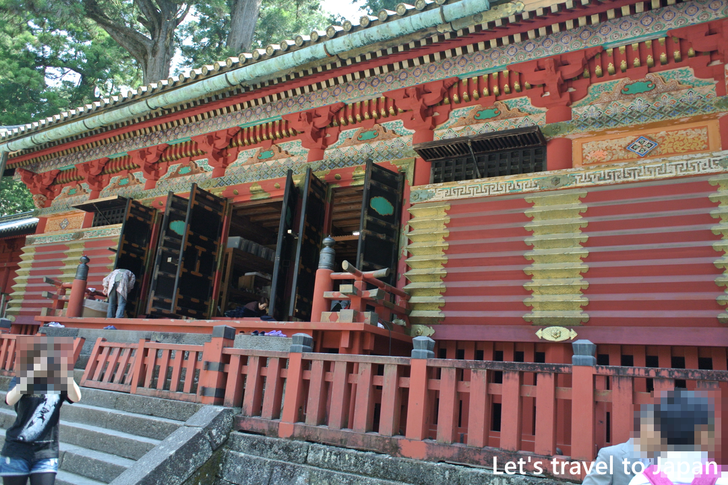
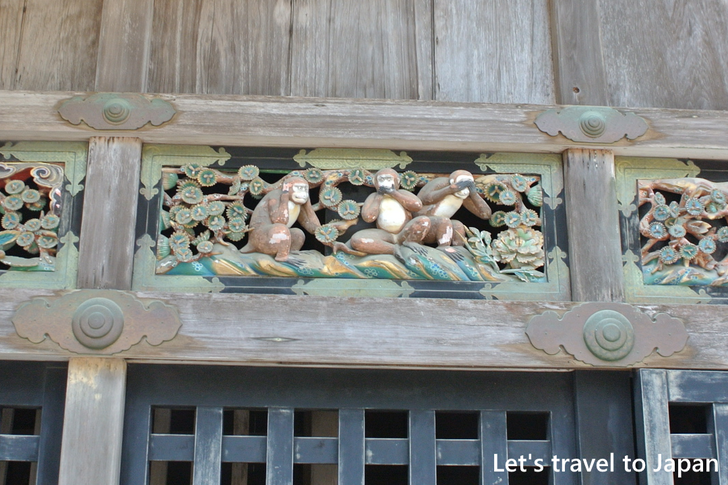
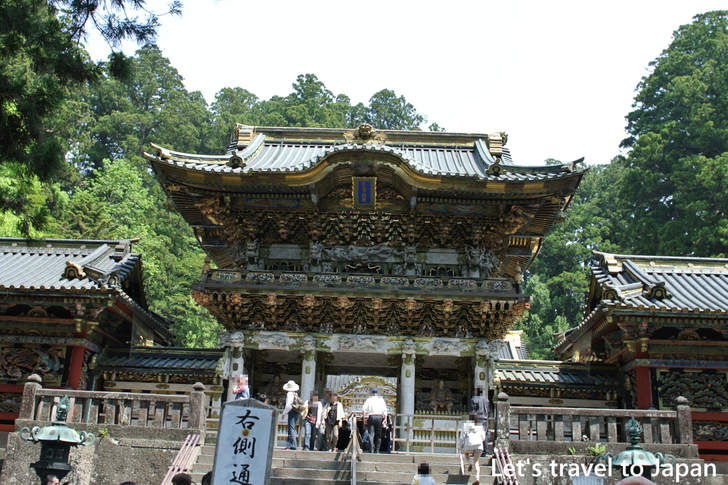
Address and access method of Nikko Toshogu Shrine
The address of Nikko Toshogu Shrine is 2301 Yamauchi, Nikko City, Tochigi Prefecture. The nearest station is Tobu Nikko Station on the Tobu Railway Nikko Line. Or it will be JR Nikko Line Nikko Station. It takes about 30 minutes on foot from the station to Nikko Toshogu Shrine. If you take a bus from Tobu Nikko Station, please take the World Heritage Tour Bus and get off at Omotesando. It takes 2 minutes on foot from the bus stop.
Attractions near Nikko Toshogu Shrine
Several other attractions near Nikko Toshogu Shrine are worth exploring:
Lake Chuzenji
A scenic lake in the mountains above Nikko, it is known for its clear blue waters and the beautiful views of Mount Nantai. A perfect spot for boating, hiking, and appreciating the stunning autumn foliage.
Kegon Falls
One of Japan's highest waterfalls, located near Lake Chuzenji. It's particularly spectacular in the autumn when the surrounding trees are ablaze with color.
Rinno-ji Temple
This is Nikko's most important Buddhist temple. It features large wooden statues of Buddha and offers a serene atmosphere for meditation.
Shinkyo Bridge
This beautiful vermilion lacquered structure is considered one of the finest bridges in Japan and marks the entrance to Nikko's shrines and temples.
Other information about Nikko Toshogu Shrine
Official site about Nikko Toshogu Shrine :
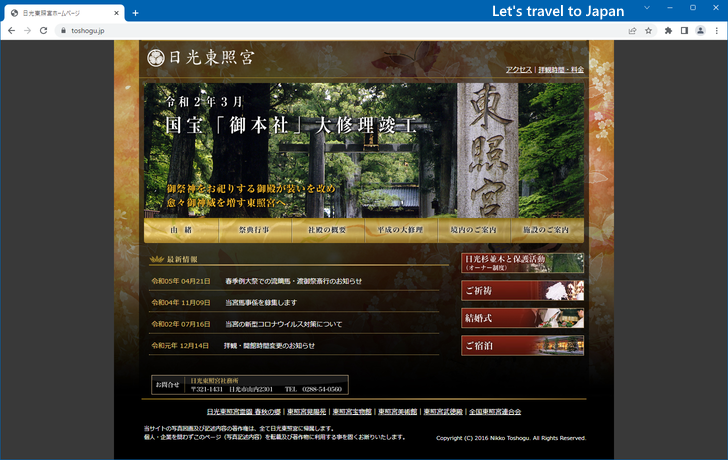
-- --
Thank you for reading to the end.
( Written by Tatsuo Ikura )